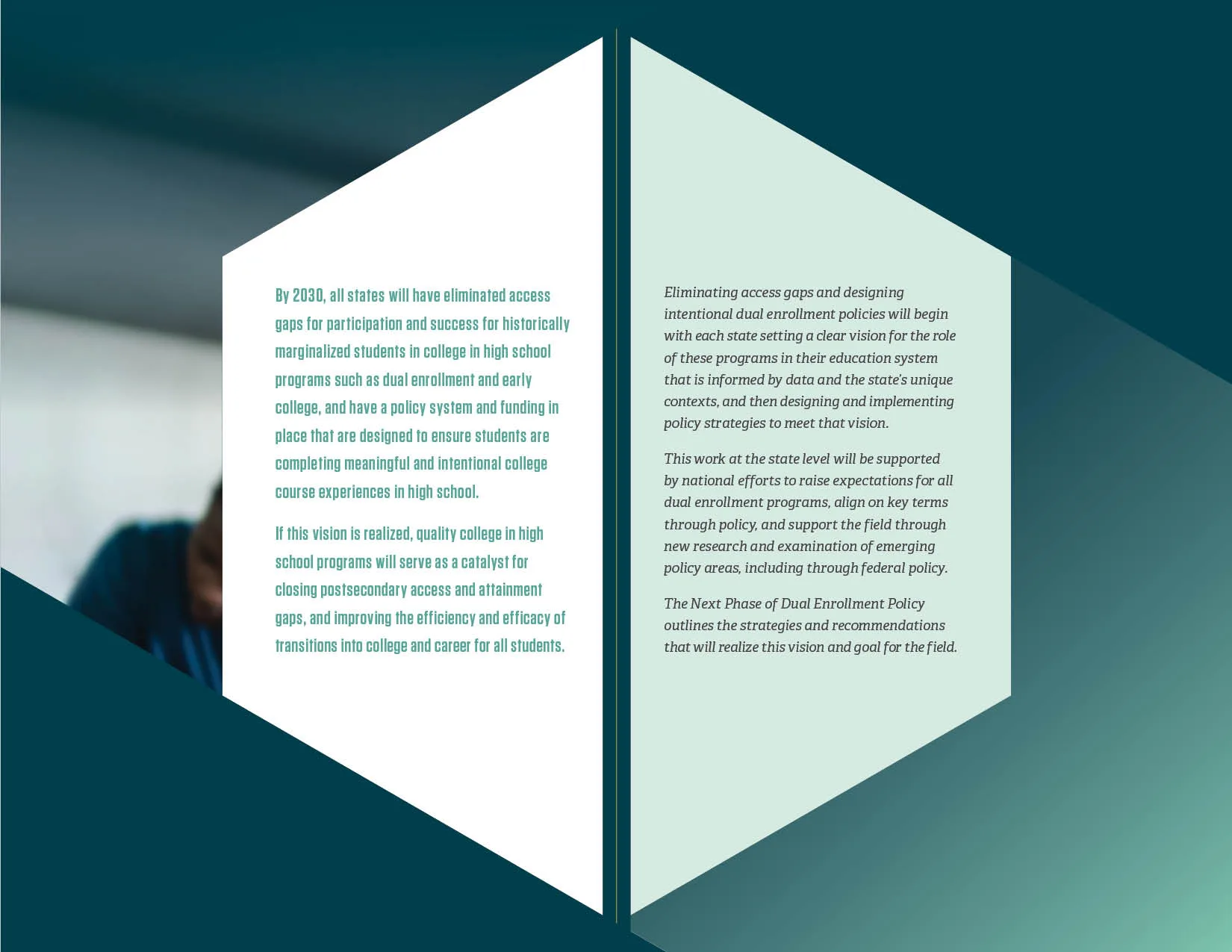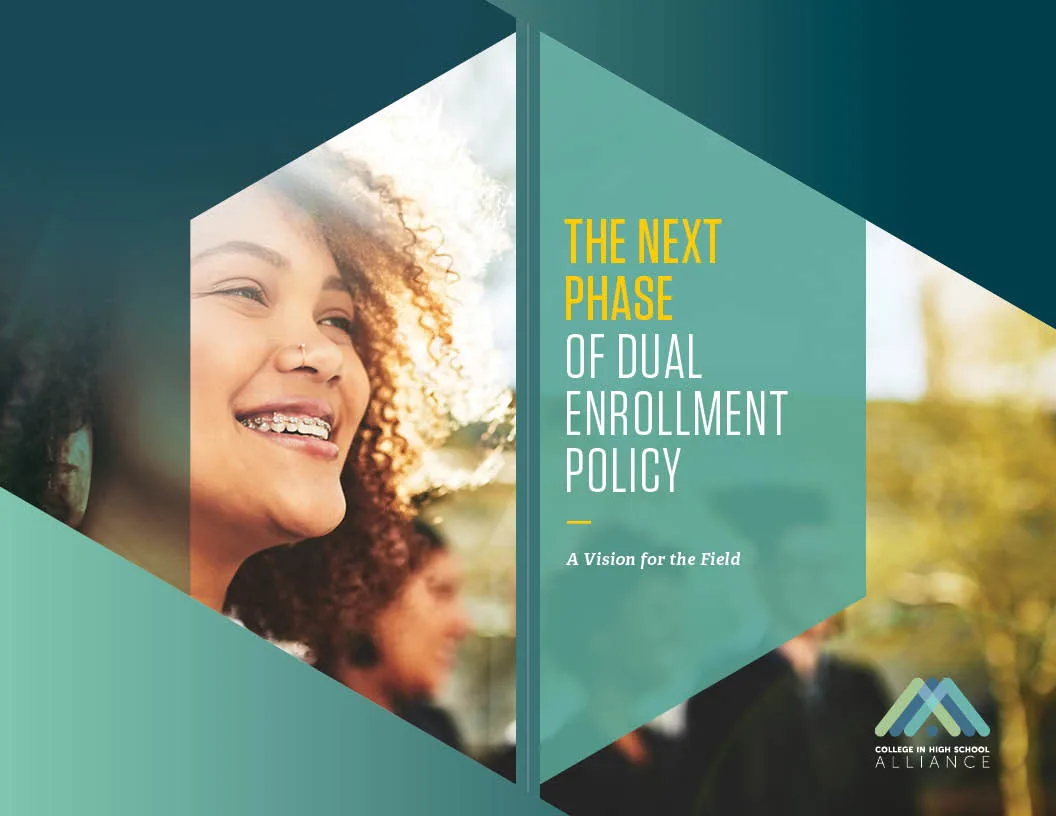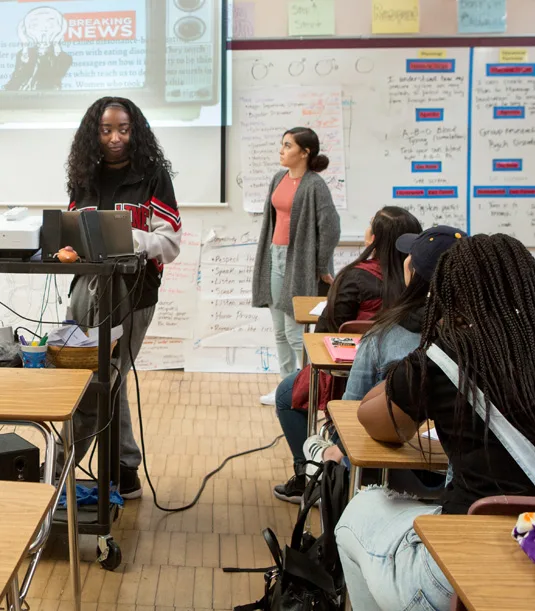The Next Phase of Dual Enrollment Policy: A Vision for the Field
Charting the Future of Dual Enrollment Policy Through 2030
November, 2023
After two decades of rapid growth, dual enrollment has become a cornerstone of college access and success — but the field now faces a new challenge: moving from expanding access to maximizing impact.
The Next Phase of Dual Enrollment Policy: A Vision for the Field outlines a national roadmap for how policymakers and practitioners can evolve state and federal policy to ensure that every dual enrollment experience is equitable, intentional, and transformative for students.
By 2030, CHSA’s vision is that every state will have eliminated access gaps for historically marginalized students and established policies that ensure all dual enrollment courses are meaningful, well-supported, and aligned with students’ college and career goals.

A Call to Action for the Next Era
Dual enrollment has proven its value. Now the question is not whether high school students should take college courses — but how many, under what conditions, and toward what goals. This new vision calls for both state and national leadership to elevate the quality, structure, and equity of college in high school programs nationwide.
Access the paper
The Next Phase of Dual Enrollment Policy: A Vision for the Field
The paper establishes six key priorities — three for states and three for national partners — that together define the next phase of dual enrollment policy:
State Priorities
-
Set a Statewide Vision for Dual Enrollment
Define clear goals for how dual enrollment fits into each state’s education system, aligned with workforce needs and postsecondary attainment goals. -
Double Down on the Equity Mission
Eliminate participation and success gaps for historically underserved students — including low-income, Black, Hispanic, rural, and students with disabilities. -
Focus Policy on Intentional Dual Enrollment Experiences
Ensure every dual enrollment opportunity is meaningful and connected to a student’s postsecondary pathway, not just a random collection of courses
National Priorities
-
Set a National Vision by Raising Expectations for Policy Support
Develop a stronger federal definition of dual enrollment that reflects program quality, student supports, and equity goals. -
Align the Field on Key Terms in Policy
Build national consistency in how programs are defined and communicated so students and families can navigate opportunities more easily. -
Examine New and Emerging Policy Trends
Study how evolving policies — from funding models to accountability systems — affect equity and sustainability
Why This Matters
Dual enrollment participation continues to grow across the U.S., helping to offset broader postsecondary enrollment declines. Yet equity gaps persist: students of color, low-income students, English learners, and students with disabilities remain underrepresented.
This paper provides a vision for the next decade — one that emphasizes purposeful policy design, equitable access, and systemic alignment between K–12 and higher education. If realized, this vision would make college in high school programs a key driver of postsecondary attainment and workforce readiness across the nation
Who Should Read This Report
-
State education and higher education leaders
-
Governors’ offices and legislative staff
-
Dual enrollment and early college program administrators
-
National education policy organizations and advocates
Download the Report

Learn how your state can take the next step in advancing equitable, high-impact college in high school programs through 2030.
About the Author
Written by Alex Perry, Coordinator of the College in High School Alliance (CHSA), this paper builds on six years of national collaboration with policymakers and practitioners to advance equity and quality in dual enrollment policy and practice.


